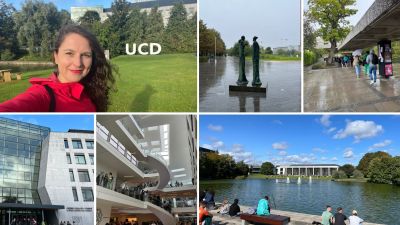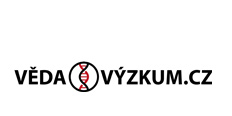Aarhus University is the second largest and second oldest university in Denmark, located in the country's second largest city. Aarhus is also considered one of the greenest cities in Europe. The university stands out for its strong international focus and interdisciplinary approach to education and research, which enables it to effectively address complex global challenges. How is science communicated there? Pavla Hubálková found out for Forum magazine as part of an Erasmus staff internship.
Aarhus University has five faculties and more than a hundred research centres. One of them is the Centre for Science Studies. "We are involved in several areas of research, which mainly include science communication, philosophy of science and history of science and technology. We strive for a comprehensive approach and a deeper understanding of science and its societal impact," says Kristian Hvidtfelt Nielsen, head of the centre.
"Specifically, my research interests include the history of science and science communication. I have recently published papers on citizen science, vaccine controversies, environmental communication and the history of science communication. I am also involved in research projects on trust and distrust in scientific expertise, open and accountable research and innovation, and the history, culture and communication of science."
His colleague, Canadian Brad Wray, who is in his seventh year at Aarhus University, will, for example, publish a book on scientific publishing next year thanks to the Carlsberg Monograph Fellowship. "In it, I will be looking at the history of scientific journals, with a special focus on recent developments and the position of scientific authors in the context of collaborations, the peer review process and also impact measures. I will also focus on contemporary issues affecting scholarly publishing, including article retraction and the rise of predatory journals." That these topics are emphasized at the university is evidenced by the fact that all students have compulsory courses on scientific ethics and publishing at the beginning of their studies.
How to beat distrust in science?
"Integrity, integration and institutions for trust" is the motto of the European project POESIS, coordinated by Tine Ravn from Aarhus University. "In a three-year project, our aim is to explore the effects of (dis)trust in science in collaboration with colleagues from Germany, Greece, Portugal, France, Spain and the UK. We aim to understand and describe, across countries, how and to what extent societal trust in science, research and innovation is affected by the alignment of research practices with research integrity principles and the inclusion of citizens and societal stakeholders at different stages of the research cycle."
The research includes a series of workshops and focus groups. "Our main output towards the end of next year will be concrete and data-driven recommendations on how to increase trust in science."
Trust in science with a focus on the online environment is also being addressed by Antoinette Fage-Butler from Aarhus University. "We are currently finishing a book that collects experiences from around the world and will be published in Open Access mode," she says. "Throughout the ((Mis)trust of scientific expertise project, we try to interpret trust and mistrust in scientific expertise as cultural and communicated phenomena that are linked to values and are evident in the discourses that express them. It is by understanding the cultural manifestations of distrust in scientific expertise that we can come closer to finding ways to address distrust."
Close connection to local museums
Aarhus University has a strong focus on the dialogue between science and the public, including through local museums such as:
Museum of Ancient Art – a university museum specialising in research and dissemination of the art and culture of ancient Greece and Italy.
Museum of Natural History – the second largest natural history museum in Denmark in terms of collections and exhibition space
Steno Museum – Science centre with planetarium on campus
Moesgaard Museum – you have to go "out of town" to see it, but it's worth it. The museum is dedicated to archaeology and ethnography, and you'll be impressed by the architecture of the building itself.
Den Gamle By – was a big surprise for me personally and definitely one of the best museums I've ever been to. The museum gives you a glimpse and insight into the everyday life of Danish cities in the past.





















